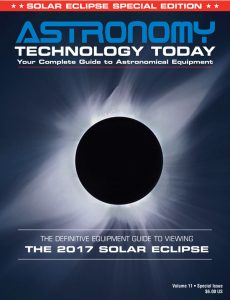Although Robert Schalck’s book, The Proper Care of Optics, Cleaning, Handling, Storage and Shipping, has been around for several years, we were recently reminded of it on a website forum post.
Telescope optics are the heart and soul of any observing setup, yet they probably get the least amount of attention by most amateur astronomers. And most of us have never really had any type of formal instruction on the proper way to care for our telescope mirrors and other delicate areas.
 So, after perusing a few pages of Robert’s peer-reviewed book on the proper care of optics (published by the optical industry’s professional society, SPIE), we thought it was worth a mention for those who were not aware this resource was available (like us here at ATT!).
So, after perusing a few pages of Robert’s peer-reviewed book on the proper care of optics (published by the optical industry’s professional society, SPIE), we thought it was worth a mention for those who were not aware this resource was available (like us here at ATT!).
The book covers all aspects about caring for telescope optics including sections on safety, solvents, lighting methods, materials, tools, cleaning methods, handling, storage and shipping. The book is a resource for those who are cleaning their optics for the first time as well as the most seasoned amateur astronomer.
Robert says that he wrote the book to teach the skill of cleaning and pass on the knowledge he has gained in the precision optical industry. His professional optical background extends over 47 years, working for several well-known optical companies. He taught a telescope making class for over 30 years and was a senior judge at RTMC for 30 years. He helped maintain the old refractors at the Chabot Space and Science Center and is a Senior Member of both SPIE and OSA and a SPIE Instructor.
The book is available on Amazon at https://www.amazon.com/Proper-Care-Optics-Cleaning-Monograph/dp/0819494577 .
###
 The Astronomy Technology Today editorial staff would like to take this opportunity to remind you of the availability of our Solar eclipse equipment guide – The Definitive Equipment Guide to the 2017 Solar Eclipse. Our goal with the 40 page publication is to provide an easy-to-consume introduction to the technological options for viewing and imaging the Great Solar Eclipse. We cover the gamut of options available including building you own solar viewer, solar glasses, smart phones, DSLR cameras, using astronomy telescopes, solar telescopes, using binoculars, solar filters (including a DYI filter option), CCD astro cameras, astro video cameras, webcams and much more. You can view the guide on our website here – its free and there is no requirement to sign up to read the guide.
The Astronomy Technology Today editorial staff would like to take this opportunity to remind you of the availability of our Solar eclipse equipment guide – The Definitive Equipment Guide to the 2017 Solar Eclipse. Our goal with the 40 page publication is to provide an easy-to-consume introduction to the technological options for viewing and imaging the Great Solar Eclipse. We cover the gamut of options available including building you own solar viewer, solar glasses, smart phones, DSLR cameras, using astronomy telescopes, solar telescopes, using binoculars, solar filters (including a DYI filter option), CCD astro cameras, astro video cameras, webcams and much more. You can view the guide on our website here – its free and there is no requirement to sign up to read the guide.

